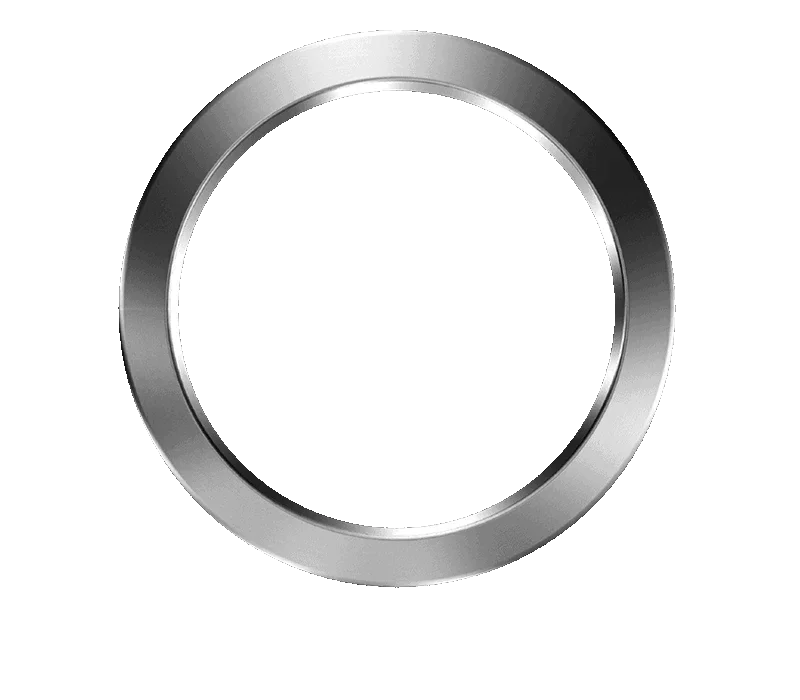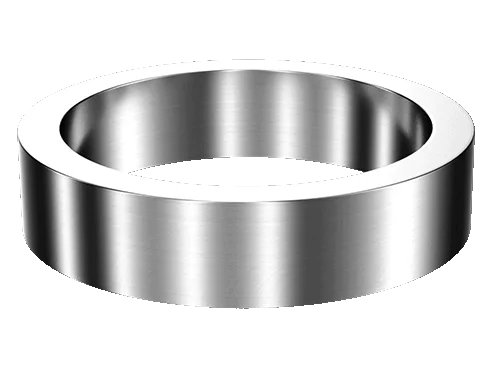Shandong Qilu lndustrial Co.,Ltd.
Exploring the Versatility of Large Diameter Ring Forgings in Manufacturing
Introduction

Large diameter ring forgings are essential components in modern manufacturing, prized for their strength, reliability, and dimensional accuracy. This blog delves into the multifaceted aspects of large diameter ring forgings, exploring their manufacturing processes, diverse applications across industries, advantages, environmental considerations, and more.
Manufacturing Processes
Large diameter ring forgings undergo intricate manufacturing processes to achieve their superior mechanical properties and precise dimensions.
- Ring Rolling Process: The primary method for producing large diameter ring forgings involves shaping heated metal using rollers that incrementally deform the material into a ring shape. This process ensures the integrity of the grain structure and enhances the mechanical properties of the forging.The process begins with a heated billet, typically pre-formed into an approximate shape. The billet is placed on the rolling mill, where a series of rollers gradually shape it into a ring. The diameter and wall thickness are carefully controlled throughout the process to meet precise engineering specifications.
- Heat Treatment: After the initial shaping, large diameter ring forging undergo heat treatment processes such as quenching and tempering. These processes optimize the material’s mechanical properties, including strength, hardness, and ductility, ensuring it meets the rigorous demands of its intended application.Quenching involves rapidly cooling the forged ring from a high temperature to impart hardness, while tempering reduces brittleness and enhances toughness. The combination of these heat treatment steps tailors the material’s microstructure to achieve the desired balance of strength and toughness.
- Machining and Finishing: Post-forging, large diameter ring forging undergo machining processes to achieve final dimensions and surface finish. Techniques such as turning, milling, and grinding are employed to ensure precise tolerances and smooth surfaces, critical for their integration into complex mechanical systems.
Applications in Various Industries
Large diameter ring forgings serve critical roles across a spectrum of industries, each benefiting from their unique mechanical properties and reliability.
- Aerospace: In the aerospace industry, large diameter ring forgings are integral to engine components such as turbine discs, shafts, and landing gear components. These forgings are prized for their high strength-to-weight ratio, fatigue resistance, and ability to withstand extreme temperatures and stresses encountered during flight.
- Energy: Within the energy sector, large diameter ring forging are employed in turbines for power generation, including steam turbines, gas turbines, and wind turbines. These forgings endure significant rotational forces and thermal cycling, making their strength, durability, and reliability critical for uninterrupted energy production.
- Automotive: Large diameter ring forging find application in automotive transmission systems, where they contribute to the efficient transfer of power from the engine to the wheels. Components such as axle shafts and gears benefit from the high mechanical strength and wear resistance offered by forged materials, ensuring reliable performance and longevity under demanding operating conditions.
Advantages of Large Diameter Ring Forgings
The advantages of large diameter ring forgings contribute to their widespread adoption in demanding engineering applications:
- Strength and Durability: Forged from high-strength alloys, large diameter ring forgings exhibit exceptional mechanical properties, including high tensile and yield strengths. This makes them suitable for applications requiring resistance to fatigue, impact, and thermal stress.
- Customizability: Large diameter ring forgings can be tailored to specific design requirements, accommodating diverse geometries and dimensional constraints. This customization capability enhances their versatility across various industries and applications.
- Cost Efficiency: Despite initial investment in tooling and equipment, large diameter ring forgings offer long-term cost efficiency. Their durability and reliability minimize downtime and maintenance costs, contributing to overall operational savings over their service life.
Case Studies and Performance Data
Properties of Common Materials Used in Large Diameter Ring Forgings
| Material | Typical Tensile Strength (MPa) | Typical Yield Strength (MPa) | Typical Hardness (HRC) | Typical Impact Toughness (J) |
|---|---|---|---|---|
| Carbon Steel | 600 – 900 | 400 – 700 | 20 – 40 | 50 – 100 |
| Alloy Steel | 800 – 1200 | 600 – 1000 | 25 – 45 | 80 – 150 |
| Stainless Steel | 600 – 1000 | 300 – 600 | 15 – 35 | 50 – 120 |
Environmental Considerations

Large diameter ring forgings contribute to sustainability in manufacturing through several key aspects:
- Material Efficiency: The forging process minimizes material waste compared to alternative manufacturing methods, ensuring efficient use of resources.
- Longevity: By enhancing the durability and operational life of critical components, large diameter ring forgings reduce the frequency of replacements and associated environmental impacts.
Conclusion
In conclusion, large diameter ring forgings are indispensable components in modern manufacturing, renowned for their robustness, reliability, and versatility across diverse industries. Understanding their intricate manufacturing processes, diverse applications, advantages, and environmental considerations is crucial for optimizing their performance and integration into complex engineering systems.
FAQ
Q: What materials are commonly used for large diameter ring forgings?
A: Large diameter ring forgings are typically forged from high-strength alloys such as carbon steel, alloy steel, and stainless steel. These materials offer superior mechanical properties, including high tensile and yield strengths, as well as enhanced resistance to fatigue and thermal stress.
Q: How are large diameter ring forgings inspected for quality?
A: Large diameter ring forgings undergo rigorous quality inspection processes to ensure compliance with stringent engineering specifications. Non-destructive testing (NDT) methods such as ultrasonic testing (UT) and magnetic particle inspection (MPI) are commonly employed to detect internal defects and ensure structural integrity.
Q: What are the limitations of large diameter ring forgings?
A: While large diameter ring forgings offer exceptional strength, durability, and customization capabilities, their production can be complex and requires specialized equipment and expertise. Additionally, the size and complexity of forged components may present challenges in machining and finishing processes, necessitating careful planning and execution.
